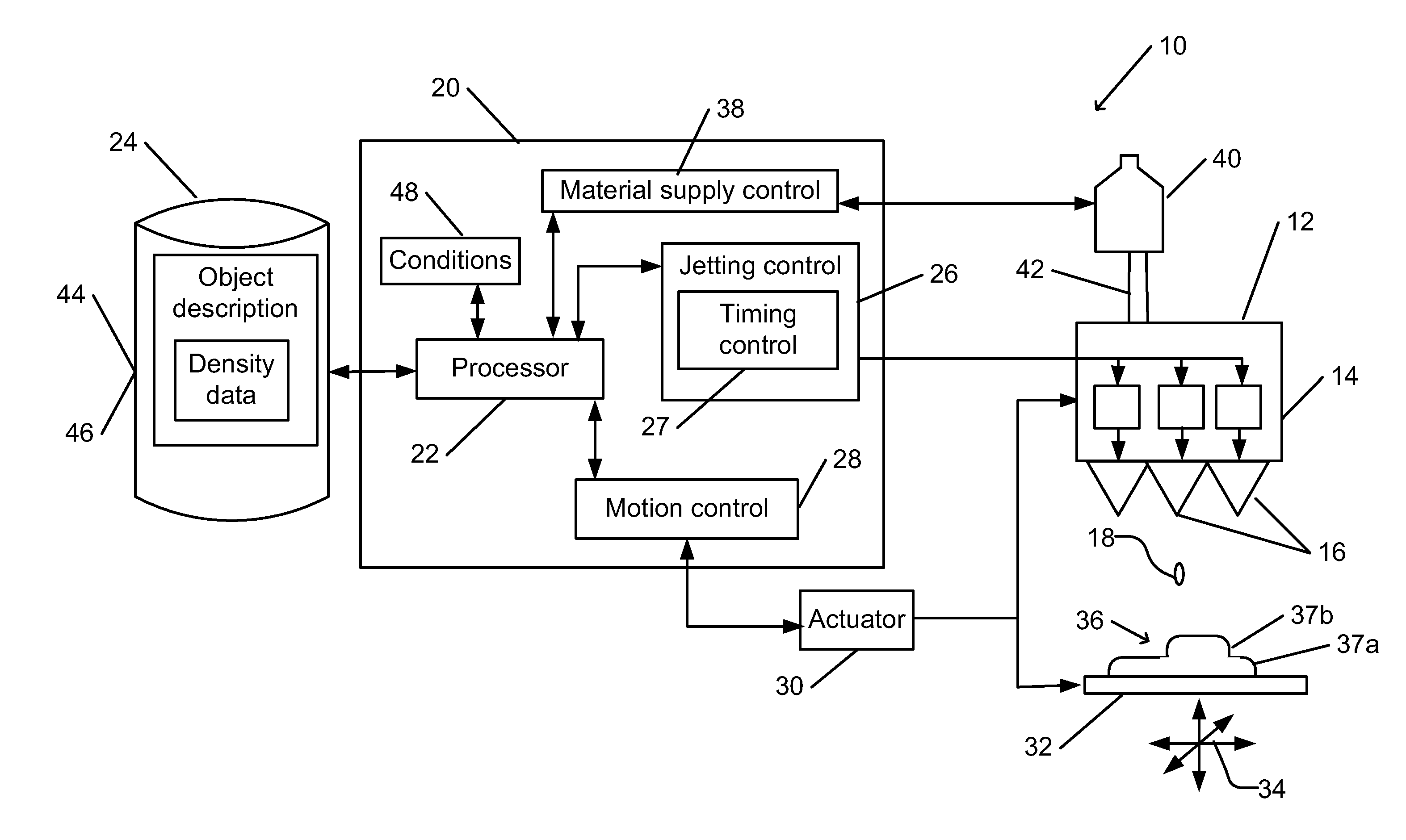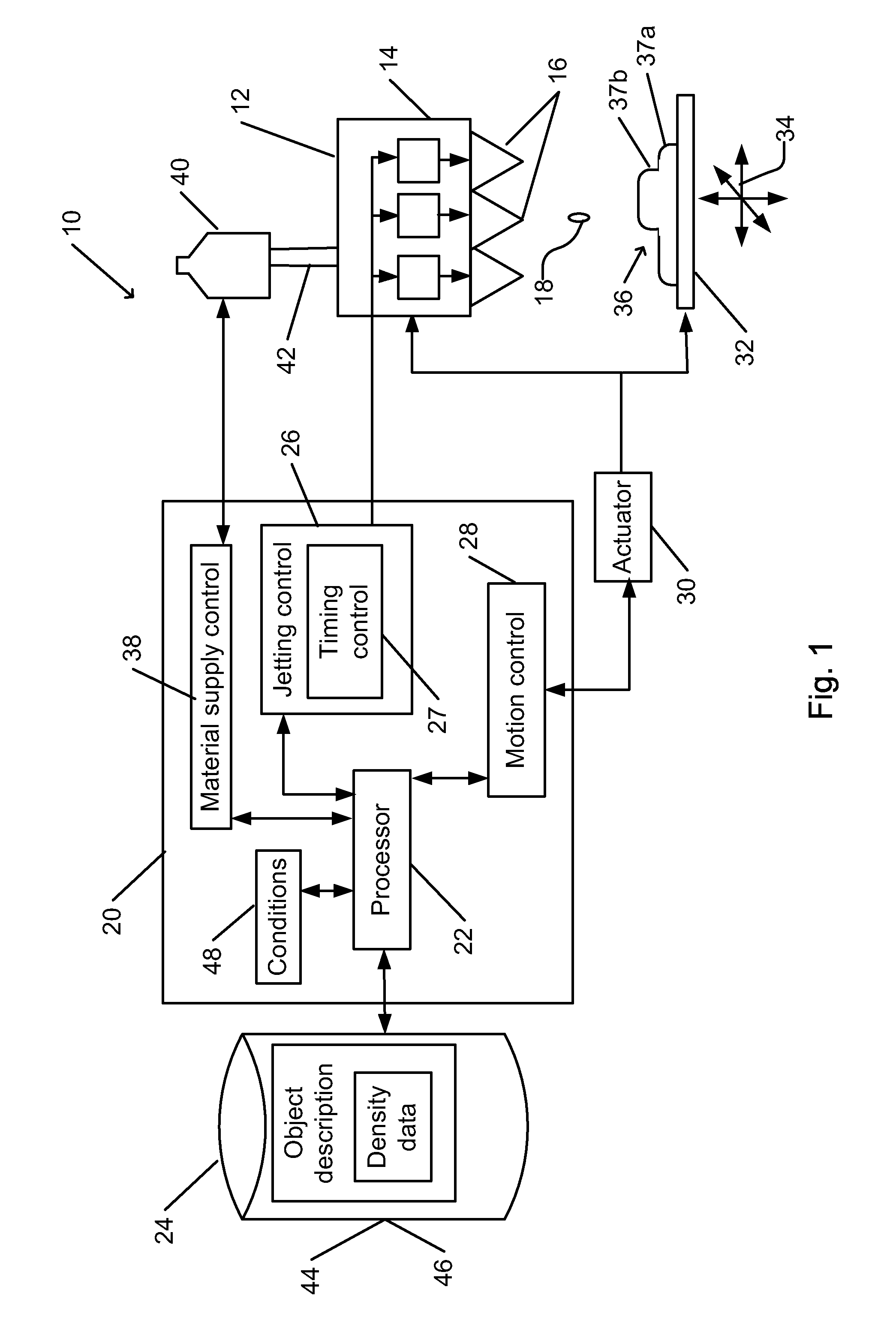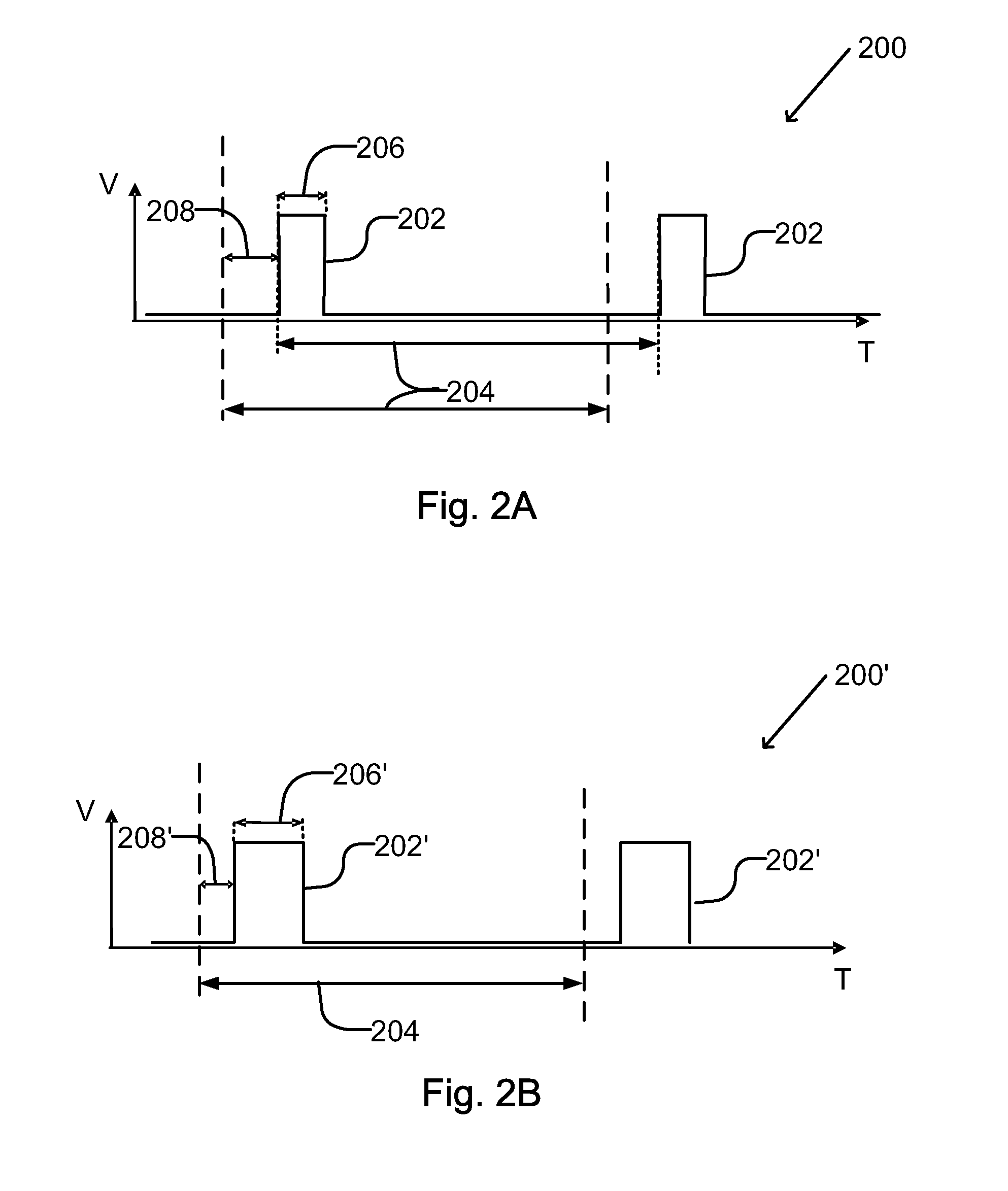Controlling density of dispensed printing material
a technology of printing material and density, applied in printing, manufacturing tools, additive manufacturing, etc., can solve the problems of printing head to jet or expel a drop of material, and much effort is invested
- Summary
- Abstract
- Description
- Claims
- Application Information
AI Technical Summary
Benefits of technology
Problems solved by technology
Method used
Image
Examples
example
[0073]As discussed above, a relationship between gas bubble content and pulse timing may be determined empirically. The example below illustrates an empirical determination of gas bubble content when printing a 3D model.
[0074]In order to introduce different amounts of gas bubbles inside the 3D model and to measure the gas bubble content, plano-parallel samples of approximately 1 cm thickness were printed from a transparent photopolymer, Objet Vero Clear™ RGD810, and jetted by an ALARIS™ 3D printer (both of Objet® Ltd., Rehovot, Israel). Different jetting (pulse) frequencies and different combinations of pulse widths and pulse delays were used in patterning the electric signal that was applied to a piezoelectric element of the printing head. Tested pulse timing pattern and changeable parameters are depicted schematically in FIGS. 3A and 3B.
[0075]Different building conditions (pulse timing) result in different and varying gas bubble content and, in turn, in different levels of translu...
PUM
| Property | Measurement | Unit |
|---|---|---|
| Fraction | aaaaa | aaaaa |
| Density | aaaaa | aaaaa |
| Speed | aaaaa | aaaaa |
Abstract
Description
Claims
Application Information
 Login to View More
Login to View More - R&D
- Intellectual Property
- Life Sciences
- Materials
- Tech Scout
- Unparalleled Data Quality
- Higher Quality Content
- 60% Fewer Hallucinations
Browse by: Latest US Patents, China's latest patents, Technical Efficacy Thesaurus, Application Domain, Technology Topic, Popular Technical Reports.
© 2025 PatSnap. All rights reserved.Legal|Privacy policy|Modern Slavery Act Transparency Statement|Sitemap|About US| Contact US: help@patsnap.com



